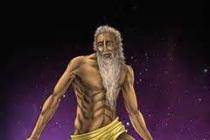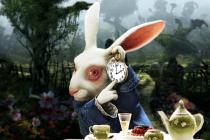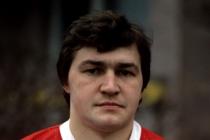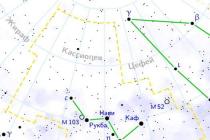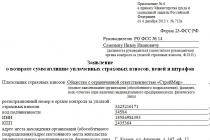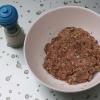The views of William Harvey (1578-1657) and Rene Descartes (1596-1650) on the structure of the heart and blood circulation still serve as a topic for study and reflection. These two seventeenth-century explorers—a British physician and a French philosopher and mathematician—had significantly different beliefs. Both of them accepted the idea of blood circulation, but explained the work of the heart differently.
Harvey's approach to cardiac and cardiovascular physiology was mainly based on Gallen's beliefs. But in Europe at that time, Descartes' views received great support. Since then, their opposing views have been studied, repeatedly revised, rejected or justified by subsequent generations of medical writers in different parts Europe.
In this article we will pay attention to the works of William Harvey to show the significance of his discovery of blood circulation and his fundamental contribution to the development of medicine and cardiology, in particular.
Brief biography of William Harvey
In 1602 he received his doctorate in medicine from the University of Padua in Italy. After returning to England, William Harvey became a member of the College of Physicians, worked as a physician at St. Bartholomew's Hospital and lecturer at the Lamlean Readings, and in 1618 was appointed physician to the royal family.
The scientist died on June 3, 1657 at the age of 79. His last work was a book on the growth and development of young animals called De Generatione Animalium, published in 1651.
Contribution to the development of medicine and cardiology
Harvey focused much of his research on the mechanism of blood flow in the human body. Most doctors of the time realized that the lungs were responsible for moving blood throughout the body. Harvey's famous work, Exercitatio Anatomica de Motu Cordis et Sanguinis in Animalibus, usually called De Motu Cordis, was published in Latin in Frankfurt in 1628. year when Harvey was 50 years old. First translation to English language appeared only two decades later.

Harvey, by observing and trying to understand the heart of living animals, was able to see that systole is the active phase of the heart's movement, pumping out blood through muscle contraction. Having discovered that the amount of blood coming from the heart was too great to be absorbed by the tissues in time, he was able to show that the valves in the veins only allowed the blood to flow in the direction of the heart, and to prove that the blood circulated through the body and returned to the heart. The valves themselves were discovered by Harvey’s teacher, Fabrizio, but were in no way associated with the process of blood circulation.
In his treatise De Motu cordis, Harvey completely destroyed most of Galen's ideas regarding the structure and functions of the heart. And in Chapter VIII he wrote: “...Finally, I saw that the blood, which is pushed into the arteries by force from the left ventricle, is distributed throughout the body... and then, in the manner already described, through the veins along the vena cava flows back into the left ventricle. We can well call such a movement circular.”

In Chapter XIII, Harvey summed up his findings: “Both evidence and visual demonstration show that the blood passes through the lungs and heart by the work of the [atria and] ventricles, pushing it out to all parts of the body, where it passes through the veins and pores of the flesh, and then flows through the veins from the periphery to the center, from smaller veins to larger ones, and then these veins transmit it to the vena cava and the right atrium of the heart. Considering that the amount of blood or its inflow and outflow, in one direction - through the arteries, in the other direction - through the veins, cannot be replenished with food, and, moreover, significantly exceeds the amount necessary only to provide nutrition, it allows us to unequivocally state that blood is in endless motion. This state of affairs is the action or function which the heart performs by pulsating. This alone is the purpose of the movement and contractions of the heart.”

Harvey's predecessors and contemporaries believed that blood was constantly formed anew from digested food, dispersed and consumed in the tissues. They believed that the main function of the heart was to produce heat. Blood was constantly consumed in the periphery and replenished through ingested nutrients, and all these processes were carried out by the right ventricle and large veins.
Harvey studied the heart not only of various fish, amphibians, reptiles, birds and mammals, but also of other animal species. But most importantly, he not only compared them, but also manipulated both living and dead animals.

He isolated parts of the heart, ligated and divided the arteries, and affected the veins on either side of the valves. His observations of dissected hearts showed that the valves in the heart only allowed blood to flow in one direction.
Harvey measured the volume of the left ventricle and calculated that in half an hour more blood passes through the human heart than the amount contained in the entire body.
Direct observation of the heart rhythms of living animals showed that the ventricles were squeezed together, disproving Galen's theory that blood was directed from one ventricle to the other.
By dissecting the septum of the heart, Harvey showed that it did not contain any gaps or pores.
When Harvey surgically removed the beating heart from a living animal, it continued to beat, functioning as a pump rather than a suction organ.
Harvey also used mathematics to prove that blood was not wasted and proposed the existence of small capillary anastomoses between arteries and veins, but these were not discovered until 1661 by Marcello Malpighi.
No matter how great the role of blood is in our body, fulfilling this role, supplying the body cells with everything necessary and removing metabolites is possible only due to the fact that the blood moves. If there were no blood that brings the blood into this continuous movement, the presence of blood would not make sense. It is not without reason that when the heart stops working, life also stops. Therefore, the blood system cannot be separated from the circulatory system, which is of enormous importance.
This system is made up of a muscular pump - the heart - and a mass of blood-carrying tubes -. That's why it is called the cardiovascular system. In addition, the functions of lymph are inextricably linked with blood and its movement. In order to correctly understand the work of the heart, blood vessels and lymphatic system, one must first of all clearly imagine the laws of blood circulation as a whole.
William Harvey and his great discovery.
Since ancient times, people have been interested in the work of the heart - a wonderful organ that continuously works throughout life, driving blood through the vessels of our body. However, for thousands of years the laws of blood movement remained unclear.
Opening up corpses, doctors and scientists saw what looked like a muscle sac the size of a fist. Inside it is divided by partitions into four chambers. One partition divides it into right and left halves, which do not communicate with each other. The other divides each of the halves into two more chambers - the atrium and the ventricle. Between these chambers there are openings with valves that allow blood to pass from the atrium into the ventricle, but do not allow it back into the atrium. A number of large vessels depart from the heart: from the right atrium - the superior and inferior vena cava, from the right ventricle - the pulmonary artery, from the left ventricle - the aorta. At the origin of the pulmonary artery and aorta from the ventricles there are also valves that allow blood to enter the vessels, but do not allow it to return back to the ventricles.
The pulmonary artery and pulmonary veins go to the lungs. The aorta vena cava, branching, sends vessels to all other organs, and - and this seemed especially strange - both an artery and a vein necessarily go next to each organ. No one could understand the meaning of such a device. They thought that blood carrying nutrients flowed through the veins to the organs, and “vital spirits” ran through the arteries. In return for the blood absorbed by the organs, it creates ever new portions of it. The idea that blood flows only through the veins was reinforced by the fact that a corpse, as a rule, did not have blood in its arteries. All the blood was in the veins. We will talk further about the reasons for this phenomenon.
Some scholars in the 16th century began to approach more correct ideas, but their voices were not heard, and the famous Spanish physician Miguel Servetus was declared a heretic for his differences with the church and burned along with his book at the stake in 1553.
It was not until 1628 that the English scientist William Harvey solved the mystery of blood circulation. In his book “On the Movement of Blood,” he stated that arteries and veins have opposite purposes, that blood flows to the organ only through the artery, and through the vein it returns back to the heart. In other words, Harvey discovered that the same amount of blood moves in a circular motion in the body. This seems self-evident to us now, but in those days it was a revolution in science, because it went against the teachings of ancient authorities. Harvey was met with hostility, but he boldly declared: “I find that anatomists should study and teach not from books ... but in the workshop of nature.”
Harvey called for an experimental study of the body and presented so many indisputable facts in defense of his teaching that he not only defeated his opponents, but also firmly introduced experiment and experience into the science of the work of our body. As we have already said, this laid the foundation for the creation of truly scientific physiology. Harvey's discovery is considered the date of her birth. In 1988, she thus turned 360 years old.
There are dates in the history of science to which it is gratifying to return in thoughts again and again.
The importance of blood movement for the life of the body is clear to everyone. The work of the heart and the movement of blood in animals and humans have long attracted the closest attention of scientists, for this phenomenon is inseparable from the concept of life, it symbolizes and determines it.
William Harvey, who discovered blood circulation, wrote that the heart, in its structure and adaptability to movement, is like an internal being that appears before all other organs. Harvey pointed out the primary importance of the heart on the first page of his remarkable treatise on the movement of the heart and blood in animals, published in 1628.
In 1928, the 300th anniversary of the appearance of this brilliant work was solemnly celebrated in London and other scientific centers of the world. In June 1957, we celebrated another significant date - the 300th anniversary of the death of the father of modern physiology, as the great Russian physiologist Ivan Petrovich Pavlov rightly called Harvey.
The century that gave birth to William Harvey is a significant and vibrant chapter of history. This was an era when the old feudal relations that had previously seemed unshakable and unchangeable were destroyed. K. Marx called this era “the dawn of the era of capitalism.”
A fresh wind blew over the old ossified world with its strictly established feudal hierarchy, craft guilds, quiet patriarchal cities, and monastery-like universities, the wind of a new era. According to the 16th-century English playwright, Shakespeare's predecessor, Christopher Marlowe, it was "that wind that set the whole world in motion - the thirst for gold." The bourgeoisie and the new nobility are entering the historical arena, who see the key to prosperity not so much in noble privileges as in the accumulation of material wealth.
The emergence and development of a new, capitalist society in the depths of the old, feudal one, which began in Northern Italy, especially in its coastal cities, and then in the Netherlands, gradually covers other countries, in particular England.
In 1568 the London Exchange was founded. In the second half of the 16th century, companies were organized to trade with overseas countries. English merchants, pirates, adventurers and profit seekers set off on long journeys. They brought gold and precious stones, fabrics and spices, furs, valuable woods, ivory and new plants, paintings, books and new knowledge to England.
Like geographical horizons, mental horizons have also expanded widely. It was an era “... when all the old bonds of society were loosened and all inherited ideas were shaken. The world immediately became almost ten times larger; instead of a fourth of the hemisphere, the entire globe now lay before the eyes of Western Europeans, who were in a hurry to take possession of the remaining seven-eighths. And along with the ancient narrow borders of the homeland, the thousand-year-old framework of the prescribed medieval “thinking” also fell. An infinitely wider horizon opened up to the external and internal gaze of man.
The new political force - the bourgeoisie - needed minds that would not reflect on the futility of life, but would create ideological foundations for its growing power and development of productive forces, move science forward, and accumulate specific knowledge about the living and inanimate nature surrounding man.
A stream of new thought began to penetrate English culture and gradually destroy scholastic ossification. The center of the development of English humanism was a circle that arose at Oxford University and was influenced by the Dutch humanist philosopher Erasmus of Rotterdam (1467-1536), who lived for some time in England. The participants of this circle were, in particular, Thomas More (1478-1535), one of the founders of utopian socialism, who later developed a critique of the emerging capitalist society in the pages of his well-known “Utopia” (1521), as well as John Colet (1467-1519) - supporter of the reform of the English Church and a great expert in languages.
The remarkable Italian scientist-thinker Giordano Bruno spoke in 1583 at Oxford University against the then generally accepted cosmogony * of Ptolemy. He held fierce public debates with English scholastics and theologians, describing his ideological opponents as “a constellation of pedants who, with their ignorance and arrogance, would have driven Job himself out of patience.” In London, Giordano Bruno published his works “On the Cause, the Beginning and the One”, “A Feast on the Ashes”, “On Infinity, the Universe and Worlds”.
William Harvey's friend, the English materialist philosopher Francis Bacon (1561-1626), proclaimed the beginning of a new science based on the study of things and living nature with the help of experience, a science that overthrew the “eternal truths” of the medieval scholastics. Defending real knowledge, Bacon said that scholasticism is “sterile, like a nun dedicated to God.” People, in his opinion, should be “lords and masters of nature.” This becomes possible as their knowledge grows. “Knowledge is power, power is knowledge.” Therefore, man needs a “new science”. Its object is nature; its goal is to transform nature into the “kingdom of man”; its means are the creation of a new method - experiment.
William Temple (1555-1627), professor of logic and philosophy at Cambridge University, propagated the teachings of the French humanist philosopher Ramus**, who proclaimed at the Sorbonne that above the authority of the ancients stands the authority of reason - “the king and lord of authority.”
At the University of Cambridge, when Harvey was a student, physics was taught by William Hilbert ***, who created a theory of magnetic phenomena based on experiment.
English scientists and philosophers of the 16th-17th centuries, in most cases coming from the bourgeoisie, saw their task in scientific discoveries, confirmed by experience, and in the fight against the bookish wisdom of scholasticism. Thus, Harvey wrote: “...I find that anatomists should study and teach not from books, but by preparation, not from the dogmas of learning, but in the workshop of nature”****.
In connection with these words, how can one not recall the characterization of Harvey given by I. P. Pavlov: “Harvey with his thought rose above a hundred other, and often not small, heads, largely due to the fact that... he vivisected.”
William Harvey was not only a wonderful doctor and a tireless researcher who took advantage of every free minute to carry out his observations and experiments. He spoke many languages, was a brilliant humanist, brought up on the masterpieces of Greek and Roman literature, loved and highly appreciated the fine arts, especially Italian painting.
Both in content and meaning scientific activity Harvey can rightfully be classified as one of the titans that Engels speaks of in the old introduction to Dialectics of Nature: “This was the greatest progressive revolution that humanity had experienced before, an era that needed titans and which gave birth to titans in the power of thought, passion and character, versatility and scholarship."
The stamp of a great cultural era affected all areas of Harvey's scientific work. He combined the best traditions of ancient scientific thought in the field of natural science and medicine with advanced ideas of humanism.
The latter circumstance is especially evident in his systematic struggle against the principles of authoritarian thinking in natural science and in his energetic defense of the cognitive significance of experience.
It is possible that friendly relations with Francis Bacon strengthened Harvey in a materialist position. However, his experimental method in the field of medicine could have been born independently of Bacon's philosophical defense of experiment.
Since the era of Leonardo da Vinci, the spirit of criticism and rejection of authority has become a firmly ingrained principle of scientific inquiry among progressive humanists. The combination of an outstanding experimenter and a materialist philosopher in Harvey was determined by the general critical direction of the era.
* Cosmogony is the science of the origin and development of celestial bodies and their systems.
** Ramus is the Latinized surname of Pierre de la Rame (1515 - 1572), one of Descartes' predecessors.
*** William Gilbert (1540-1603) - English physicist; court physician to Queen Elizabeth.
**** V. Harvey. Anatomical study on the movement of the heart and blood in animals, p. 10. Publishing house of the USSR Academy of Sciences. 1948.
In 1598 Harvey went to the University of Padua. Here he listens to lectures by the famous anatomist Fabrizio d'Acquapendente. This scientist discovered special valves in the veins, but never understood their significance. For him, they were just a detail of the structure of the veins.
But Harvey thought about the role of these valves. He decides to experiment on himself. Having tightly bandaged his hand, William saw how the hand below the bandage soon became numb, the veins swelled, and the skin darkened. Harvey performed the following experiment on a dog. He tied both her legs with a cord. And again, below the bandages, the legs began to swell and the veins began to swell. When the bulging vein in one leg was cut, thick, dark blood dripped from the cut. After the cut on the other leg above the bandage, not a single drop of blood flowed out of the cut. It became clear that the vein below the bandage was filled with blood, but above the bandage there was no blood in it. Harvey dissects various animals, but most often cats, dogs, and calves. The scientist also dissects human corpses: the prohibition on dissecting corpses no longer existed. And every time he examined the veins and arteries, cut the heart, studied the ventricles and atria.
In 1616, he was offered the chair of anatomy and surgery at the College of Physicians, and the very next year he outlined his views on blood circulation. During the lecture, Harvey for the first time expressed the belief that the blood in the body is constantly circulating - circulating, and that the central point of blood circulation is the heart. By making a similar conclusion, Harvey refuted Galen's theory that the center of blood circulation is the liver.
Only in 1628, when Harvey was already fifty years old, his “Anatomical Study of the Movement of the Heart and Blood in Animals” was published, and the work was published not at home, in England, but in distant Frankfurt. A small book of 72 pages made him immortal.
Harvey believed that the heart is a powerful muscular sac divided into several chambers. Acting like a pump, it forces blood into the vessels (arteries). Heart beats are successive contractions of its parts - the atria, ventricles, this external signs"pump" operation. Blood moves in two circles, always returning to the heart. In a large circle, blood moves from the heart to the head, to the surface of the body, to all its organs. In the small circle, blood moves between the heart and lungs. There is no air in the vessels because they are filled with blood. The general path of blood is from the right atrium to the right ventricle, from there to the lungs, from them to the left atrium. This is the pulmonary circulation. The honor of discovering the pulmonary circulation belongs to the Spaniard Servetus. Harvey could not have known this, because Servetus’ book was burned. Blood comes out of the left ventricle along the path of the great circle. First, through large, then through increasingly smaller arteries, it flows to all organs, to the surface of the body. The blood makes its way back to the heart (to the right atrium) through the veins. Both in the heart and in the vessels, blood moves only in one direction. This happens because the heart valves do not allow reverse flow. The valves in the veins open the way only towards the heart. The reasoning and evidence given in Harvey's book were very convincing. And yet, as soon as the book appeared, Harvey was attacked from all sides. The authority of Galen and other ancient sages was still too great. Harvey had to go through a lot of troubles, but then his teachings began to be taken into account more and more. Young doctors and physiologists followed Harvey, and the scientist, at the end of his life, waited for his discovery to be recognized. Harvey's discovery created a radical change in the development of medical science.
By contracting, the heart moves the blood. It runs through the vessels throughout the body. But until the 17th century. Even scientists had no idea about this truth, which is generally known today. The great scientific discovery - the discovery of blood circulation - was made by the English physician and biologist William Harvey.
William Harvey (more correctly - Harvey) was born on April 1, 1578 in the family of a wealthy English merchant.
Twenty-year-old William, having graduated from Cambridge University, went, according to the custom of that time, to supplement his education in other countries: France, Germany, and then to Italy.
In Italy, he entered the University of Padua and at the age of 24 received a doctorate there. Even then, Harvey began to study the movement of blood in the body.
What ideas about the movement of blood prevailed in the science of that time?
For almost a millennium and a half, medicine was dominated by the teachings of Galen. According to Galen, the main organ of blood circulation is not the heart, but the liver, where food is constantly converted into blood. From here
blood flows into the heart. Air “pneuma” enters the heart from the lungs and mixes with the blood, spiritualizing it. After which the blood flows to all parts of the body where it is consumed.
The University of Padua was famous for the fact that half a century before Harvey, such a famous naturalist as Andreas Vesalius worked and lectured here. Vesalius pointed out many of Galen's mistakes. He found out that the ventricles of the heart are tightly separated by partitions. This means that “pneuma” cannot mix with blood. The attack on Galen's unshakable authority caused great indignation in medical circles. One of the printed works directed against Vesalius was called: “Against the slander of the anatomical works of Hippocrates and Galen by a certain madman.”
And when Harvey studied and worked at the University of Padua, the famous professor Fabricius Acquapendente lectured here. He opened special valves in the veins. The professor did not understand the meaning of these valves. Young Harvey became interested in their role.
Many of Harvey's contemporaries would compete in speculative guesses regarding the role of the valves. And Harvey checked it many times during his life and in the end clearly expressed the following truth: one can judge the task of an organ only by studying its structure in detail.
And now the young scientist decided to conduct experiments, and he started with an experiment on himself. He bandaged his hand tightly. Below the bandage, the arm became numb, the veins on it were swollen. Then he conducted an experiment on the dog, tightly bandaging its paws. Below the bandage, the veins again swelled. When cut, blood dripped from them. And not a drop of blood flowed out of the cut in the vein above the bandage! Vienna was empty there.
The conclusion seemed obvious: blood in the veins moves only in one direction. The valves do not allow reverse flow. But Harvey was in no hurry to report his discovery.
Returning to London in 1607, Harvey began teaching surgery at the Royal College of Physicians, while also working as chief physician at St. Bartholomew's Hospital and as court physician to King James I and, after his death, to Charles I.
He did not stop his research in the field of blood circulation. Many years of experiments convinced Harvey of Galen's mistake: blood is not spent in the organs. Harvey proved that the body contains some constant quantity blood, which is small.
Harvey came to the conclusion that the center of blood circulation is not the liver, as Galen believed, but the heart. The heart moves blood along a closed path. The arteries carry “perfect and nourishing” (as Harvey wrote) blood from the heart, and the veins return “depleted and unfit” blood to the heart.
The blood moves in circles, always returning to the heart. There are two of these circles. In a large circle, the blood goes around the entire body. In the small circle, blood moves between the heart and lungs. Harvey did not know and could not know what role the lungs play in the body. The science of that time did not yet have any idea about oxygen and its role in the body. Harvey believed that blood was filtered through the lungs to cool it.
The pulmonary circulation was discovered in the middle of the 16th century. Spanish scientist Miguel Servet. But his “harmful heretical” books, like Servetus himself, were burned at the stake in 1553. Therefore, his work was unknown to Harvey.
Harvey did not know how blood gets from arteries to veins. He only saw how the arteries branched into smaller arteries, which branched into even smaller ones. Harvey suggested the existence of the thinnest vessels - capillaries. And their presence was proven by the first time he saw these vessels under a microscope, the Italian scientist Marcello Malpighi in 1661, 4 years after Harvey’s death.
Malpighi was struck by the beauty of the spectacle that opened before him and wrote: “I can say with greater reason than Homer once did: I see truly great things with my own eyes.”
For a decade and a half, Harvey tested and pondered his discoveries before he first decided to talk about them at a lecture in 1616. But he refused to publish their results even then.
Only in 1628, and even then after much persuasion from friends, did Harvey decide to publish his data. That year his book “Anatomical Study on the Movement of the Heart and Blood of Animals” was published.
It was written very concisely (72 pages of text) and contained only one (but very clear) illustration. In his book, Harvey acknowledged the merits of Aristotle and Galen. “But,” he wrote, “if we rest on their discoveries and believe (out of our stupidity, of course) that we ourselves cannot discover anything, then by doing so we will only diminish the sharpness of our thoughts and extinguish the lamp that they left for us.” " In their views on the movement of blood, Harvey wrote, much is “either incorrect or vague.”
In his conclusions, Harvey relied on a huge mass of facts that he collected while studying 60 various types animals (among them were mammals, birds, lizards, frogs, fish, crayfish, snails).
Despite the convincingness of Harvey's arguments, the book provoked fierce attacks from all official medical science. After all, it refuted the thousand-year-old teaching of Galen!
In 1651, Harvey published his second remarkable book - a small treatise “An Inquiry into the Origin of Animals.” Once again, the scientist, not broken by many years of persecution, decided to speak out against generally accepted opinion. Most scientists of that time believed that worms, insects, even frogs and mice could arise by themselves, from non-living matter (see article “The Origin and Development of Life”). Harvey rejected the idea of spontaneous generation.
He studied the development of embryos in chickens and roe deer. For his experiments he used so many chicken eggs, which, according to his servants, was enough for scrambled eggs for the entire population of England.
Harvey's observations suggested that the embryos of all animals develop only from eggs. He formulated this famous rule as a saying: “Everything that lives comes from an egg” (in Latin - “Omne vivum ex ovo”). Particularly noteworthy is

Harvey demonstrates his experiments to the English King Charles I.
Harvey's guess is that even mammals develop from eggs. After all, he could not see the eggs (ovules) of mammals - only in 1826 did the Russian scientist Karl Baer see such an egg using a microscope.
This work of Harvey marked the beginning of modern embryology.
Harvey's fate after the publication of his book on blood circulation was quite complex.
Doctors and anatomists of that time believed in the infallible authority of Galen. They mocked Harvey, considering him almost crazy, and said with contempt that “everyone now interferes with his discoveries.” Opponents even nicknamed Harvey “circulator” (since the Latin for “blood circulation” is “circulatio sanguineus”). This nickname was quite offensive, because in Latin it means “charlatan, deceiver.”
Russian scientist Ivan Pavlov called Harvey's book "not only a fruit of rare value, the fruit of his mind, but also a feat of courage and dedication."
In 1642, civil war began in England, and Harvey, as a court physician, left London with King Charles I (executed during the English Revolution in 1649). Harvey's property along with manuscripts scientific works remained in London and was burned.
And yet, despite these adversities, as well as attacks and slander, Harvey lived to recognize that he was right. He died at the age of 79, on June 3, 1657, enjoying well-deserved respect.
Not many outstanding biologists and doctors can be said to have had a monument erected to them, like Harvey, during their lifetime. It was placed at the Royal College of Physicians in London.
William Harvey (years of life - 1578-1657) - English physician and naturalist. He was born in Folkestone on April 1, 1578. His father was a successful merchant. William was the eldest son in the family, and therefore the main heir. However, unlike his brothers, William Harvey was completely indifferent to fabric prices. Biology did not immediately interest him, but he quickly realized that he was burdened by conversations with captains of chartered ships. Therefore, Harvey happily began studying at Canterbury College.
Below are portraits of such a great physician as William Harvey. These photos refer to different years of his life; the portraits were made by different artists. Unfortunately, cameras did not exist at that time, so we can only roughly imagine what W. Harvey looked like.
Period of study
In 1588, William Harvey, whose biography is still of interest to many today, entered the Royal School, located in Canterbury. Here he began to study Latin. In May 1593 he was admitted to Keyes College of the famous Cambridge University. He received a scholarship in the same year (it was established by the Archbishop of Canterbury in 1572). Harvey devoted the first 3 years of his studies to “disciplines useful for a doctor.” These are classical languages (Greek and Latin), philosophy, rhetoric and mathematics. William was especially interested in philosophy. From his writings it is clear that Aristotle's natural philosophy had a very great influence on the development of William Harvey as a scientist.
For the next 3 years, William studied disciplines that relate directly to medicine. Studying at Cambridge at that time consisted mainly of reading and discussing the works of Galen, Hippocrates and other ancient authors. Sometimes anatomical demonstrations were given to students. The science teacher was required to conduct them every winter. Keyes College received permission to perform autopsies twice a year on the bodies of criminals who had been executed. Harvey received the title of bachelor in 1597. He left Cambridge in October 1599.
Journey
At the age of 20, burdened with the “truths” of medieval logic and natural philosophy, having become a fairly educated person, he still knew practically nothing. Harvey was attracted to natural sciences. Intuitively, he understood that it was they who would give scope to his sharp mind. As was the custom for young men of that time, William Harvey set out on a five-year journey. He wanted to strengthen himself in distant countries in his timid and vague inclination towards medicine. And William went first to France and then to Germany.
Visit to Padua

Unknown exact date William's first visit to Padua (some researchers date it back to 1598), but in 1600 he was already a “prefect” representative (elected position) of students from England at the University of Padua. At that time, the local medical school was at the height of its glory. Anatomical research flourished in Padua thanks to G. Fabrizius, a native of Acquapendente, who first occupied the department of surgery, and subsequently the departments of embryology and anatomy. Fabricius was a follower and student of G. Fallopius.
Introduction to the achievements of G. Fabrizius
When William Harvey arrived in Padua, G. Fabricius was already at a respectable age. Most of his works were written, although not all of them were published. His most significant work is “On Venous Valves.” It was published during Harvey's first year in Padua. However, Fabricius demonstrated these valves to students as early as 1578. Although he himself showed that the entrances to them are always open in the direction of the heart, he did not see a connection with blood circulation in this fact. Fabricius's work had a great influence on William Harvey, in particular on his books "On the Development of the Egg and Chick" (1619) and "On the Ripe Fruit" (1604).
Own experiments

William wondered what role these valves played. However, for a scientist, mere reflection is not enough. What was needed was experimentation and experience. And William began with an experiment on himself. Having bandaged his hand, he discovered that it soon became numb below the bandage, the skin darkened, and the veins swelled. Harvey then experimented on a dog, which he bound both legs with a cord. And again, the legs below the bandages began to swell, the veins swelled. When he cut a swollen vein in his leg, dark, thick blood dripped from the cut. Then Harvey cut a vein in the other leg, but now above the bandage. Not a single drop of blood came out. It is clear that the vein below the dressing is filled with blood, but there is no blood in it above the dressing. The conclusion suggested itself as to what this could mean. However, Harvey was in no hurry with him. As a researcher, he was very careful and carefully checked his observations and experiments, without rushing to draw conclusions.
Return to London, admission to practice
Harvey in 1602, on April 25, completed his education, becoming a doctor of medicine. He returned to London. The University of Cambridge recognized this degree, which, however, did not mean that William had the right to practice medicine. At that time, licenses for it were issued by the College of Physicians. In 1603, Harvey turned there. In the spring of the same year, he took exams and answered all the questions “quite satisfactorily.” He was allowed to practice until the next exam, which was to be taken in a year. Harvey appeared before the commission three times.
Working at St. Bartholomew's Hospital

In 1604, on October 5, he was accepted as a member of the College. And three years later, William became a full member. In 1609, he petitioned to be admitted as a physician to St. Bartholomew's Hospital. At that time, work in this hospital was considered very prestigious for a practicing physician, so Harvey supported his request with letters from the president of the College, as well as some of its members and even the king. The hospital management agreed to accept him as soon as there was free space. In 1690, on October 14, William was officially enrolled on her staff. He had to visit the hospital at least 2 times a week, examine patients and prescribe medications to them. Patients were sometimes sent to his home. William Harvey worked at this hospital for 20 years, despite the fact that his London private practice was constantly expanding. In addition, he continued his activities in the College of Physicians, and also carried out his own experimental research.
Speech at the Lamlian Readings
William Harvey was elected Warden of the College of Physicians in 1613. And in 1615 he began to act as a lecturer at the Lamlian readings. They were founded by Lord Lumley in 1581. The purpose of these readings was to raise the level medical education in the city of London. All education at that time was reduced to the presence of autopsies on the bodies of criminals who were executed. These public autopsies were organized 4 times a year by the Society of Barber Surgeons and the College of Physicians. The lecturer speaking at the Lamlian readings had to give an hour-long lecture twice a week throughout the year so that students could complete the full course in surgery, anatomy and medicine. William Harvey, whose contribution to biology was invaluable, performed this duty for 41 years. At the same time, he also spoke at the College. IN British Museum Today, Harvey's manuscript notes for the lectures he gave on April 16, 17 and 18 in 1616 are preserved. It's called "Lecture Notes on General Anatomy."
W. Harvey's theory of blood circulation

In Frankfurt in 1628, William's work "Anatomical Study of the Movement of the Heart and Blood in Animals" was published. In it, William Harvey first formulated his own theory of blood circulation, and also provided experimental evidence in its favor. The contribution he made to medicine was very important. William measured the total amount of blood, heart rate and systolic volume in the body of a sheep and proved that all the blood must pass through its heart in two minutes, and in 30 minutes an amount of blood equal in volume to the weight of the animal passes. This meant that, contrary to what Galen said about the flow of more and more portions of blood to the heart from the organs that produce it, it returns to the heart in a closed cycle. And the closure is ensured by capillaries - the smallest tubes connecting veins and arteries.
William becomes physician to Charles I
At the beginning of 1631, William Harvey became physician to Charles I. The king himself appreciated the contribution to science of this scientist. Charles I became interested in Harvey's research and placed the royal hunting grounds at Hampton Court and Windsor at the disposal of the scientist. Harvey used them to conduct his experiments. In May 1633, William accompanied the king on his visit to Scotland. It is possible that during his stay in Edinburgh he visited Bass Rock, where cormorants and other wild birds nested. Harvey at that time was interested in the problem of embryonic development in mammals and birds.
Moving to Oxford

In 1642 the Battle of Edgehill took place (event civil war in England). William Harvey went to Oxford to fetch the king. Here he again took up medical practice, and also continued his experiments and observations. Charles I appointed William Dean of Merton College in 1645. Oxford was besieged and taken by Cromwell's supporters in June 1646, and Harvey returned to London. Not much is known about the circumstances of his life and his activities over the next few years.
New works of Harvey
Harvey in 1646 published 2 anatomical essays in Cambridge: “Studies of the Circulation”. In 1651, his second fundamental work, entitled “Research on the Origin of Animals,” was also published. It summarized the results of Harvey's research, which he conducted over many years on the topic of embryonic development of vertebrate and invertebrate animals. He formulated the theory of epigenesis. The egg is the common origin of animals, as William Harvey argued. Subsequent contributions to science by other scientists have convincingly refuted this theory, according to which all living things come from eggs. However, for that time, Harvey's achievements were very important. A powerful impetus for the development of practical and theoretical obstetrics was the research in embryology carried out by William Harvey. His achievements ensured his fame not only during his lifetime, but also in long years after death.
last years of life

Let us briefly describe the last years of the life of this scientist. William Harvey lived in London in his brother's house (or in the suburb of Roehampton) from 1654. He became president of the College of Physicians, but decided to decline this honorary elective position because he considered himself too old for it. In 1657, on June 3, William Harvey died in London. His contribution to biology is truly enormous, thanks to him medicine has greatly advanced.

